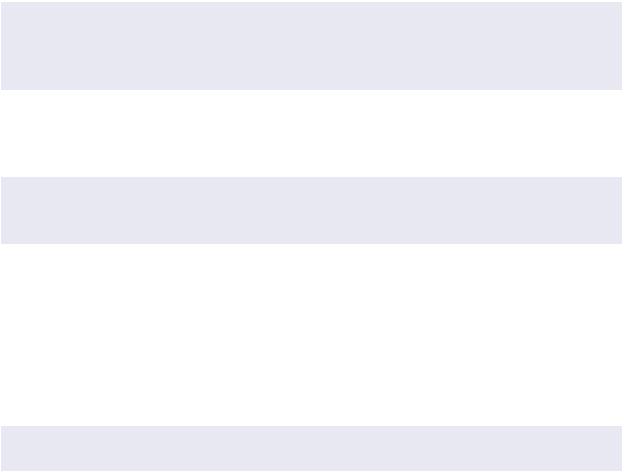
1000-2000 5 ьшò
.pdf31.
7.Yurdakul S, Mat C, Tüzün Y, et al. Adouble-blind trial of colchicine in Behçet’s syndrome. Arthritis Rheum. 2001;44(11):2686–2692.
ADDITIONALREADING
 Bartyik K, Várkonyi A, Kirschner A, et al. Erythema nodosum in association with celiac disease. Pediatr Dermatol. 2004;21(3):227–230.
Bartyik K, Várkonyi A, Kirschner A, et al. Erythema nodosum in association with celiac disease. Pediatr Dermatol. 2004;21(3):227–230.
 Chong TA, Hansra NK, Ruben BS, et al. Diverticulitis: an inciting factor in erythema nodosum. J Am Acad Dermatol. 2012;67(1):e60–e62.
Chong TA, Hansra NK, Ruben BS, et al. Diverticulitis: an inciting factor in erythema nodosum. J Am Acad Dermatol. 2012;67(1):e60–e62.
 Harris T, Henderson MC. Concurrent Sweet’s syndrome and erythema nodosum. J Gen Intern Med. 2011;26(2):214–215.
Harris T, Henderson MC. Concurrent Sweet’s syndrome and erythema nodosum. J Gen Intern Med. 2011;26(2):214–215.
 Jeon HC, Choi M, Paik SH, et al. Acase of assisted reproductive therapyinduced erythema nodosum. Ann Dermatol. 2011;23(3):362–364.
Jeon HC, Choi M, Paik SH, et al. Acase of assisted reproductive therapyinduced erythema nodosum. Ann Dermatol. 2011;23(3):362–364.
 Then C, Langer A, Adam C, et al. Erythema nodosum associated with myelodysplastic syndrome: a case report. Onkologie. 2011;34(3):126–128.
Then C, Langer A, Adam C, et al. Erythema nodosum associated with myelodysplastic syndrome: a case report. Onkologie. 2011;34(3):126–128.
 CODES
CODES
ICD10
 L52 Erythema nodosum
L52 Erythema nodosum
 A18.4 Tuberculosis of skin and subcutaneous tissue
A18.4 Tuberculosis of skin and subcutaneous tissue
CLINICALPEARLS
 Lesions of EN appear to be erythematous patches, but when palpated, their underlying nodularity is appreciated.
Lesions of EN appear to be erythematous patches, but when palpated, their underlying nodularity is appreciated.
 Evaluation for a concerning underlying etiology is necessary in EN, but most cases are idiopathic.
Evaluation for a concerning underlying etiology is necessary in EN, but most cases are idiopathic.
 EN in the setting of hilar adenopathy may be seen with multiple etiologies and does not exclusively indicate sarcoidosis.
EN in the setting of hilar adenopathy may be seen with multiple etiologies and does not exclusively indicate sarcoidosis.
 In patients with a history of Hodgkin lymphoma, EN may be an early sign of recurrence.
In patients with a history of Hodgkin lymphoma, EN may be an early sign of recurrence.
mebooksfree.com

ESOPHAGEALVARICES
Maximos Attia, MD, FAAFP  Marcelle Meseeha, MD
Marcelle Meseeha, MD
BASICS
DESCRIPTION
 Dilated submucosal distal esophageal veins connecting the portal and systemic circulations
Dilated submucosal distal esophageal veins connecting the portal and systemic circulations
 Results from portal hypertension (most commonly a result of cirrhosis), resistance to portal blood flow, and increased portal venous blood inflow
Results from portal hypertension (most commonly a result of cirrhosis), resistance to portal blood flow, and increased portal venous blood inflow  Variceal rupture: most common fatal complication of cirrhosis; severity of liver disease correlates with presence of varices and risk of bleeding.
Variceal rupture: most common fatal complication of cirrhosis; severity of liver disease correlates with presence of varices and risk of bleeding.
EPIDEMIOLOGY
Incidence
 30% of cirrhotic patients have varices at the time of diagnosis. This increases to 90% at 10 years.
30% of cirrhotic patients have varices at the time of diagnosis. This increases to 90% at 10 years.
 1-year rate of first variceal bleeding is 5% for small varices, 15% for large varices.
1-year rate of first variceal bleeding is 5% for small varices, 15% for large varices.
Pediatric Considerations
Portal hypertension is common in chronic liver disease (CLD) in children. No clear guidelines for screening; pharmacologic or endoscopic treatment is equivalent.
Prevalence
 50% of patients with esophageal varices experience bleeding at some point.
50% of patients with esophageal varices experience bleeding at some point.
 Variceal bleeding: 10–20% mortality in the 6 weeks following the episode
Variceal bleeding: 10–20% mortality in the 6 weeks following the episode
 Gender: male > female
Gender: male > female
ETIOLOGYAND PATHOPHYSIOLOGY
 Portal hypertension causes the formation of portacaval anastomoses which decompress the portal circulation. This leads to a congested submucosal venous plexus with tortuous dilated veins in the distal esophagus. Variceal rupture results in hemorrhage.
Portal hypertension causes the formation of portacaval anastomoses which decompress the portal circulation. This leads to a congested submucosal venous plexus with tortuous dilated veins in the distal esophagus. Variceal rupture results in hemorrhage.
 Pathophysiology of portal hypertension:
Pathophysiology of portal hypertension:
mebooksfree.com
–Increased resistance to portal flow at the level of hepatic sinusoids caused by
 Intrahepatic vasoconstriction due to decreased nitric oxide production and increased release of endothelin-1 (ET-1), angiotensinogen, and eicosanoids
Intrahepatic vasoconstriction due to decreased nitric oxide production and increased release of endothelin-1 (ET-1), angiotensinogen, and eicosanoids
 Sinusoidal remodeling causes disruption of blood flow.
Sinusoidal remodeling causes disruption of blood flow.
–Increased portal flow caused by hyperdynamic circulation due to splanchnic arterial vasodilation through mediators such as nitric oxide, prostacyclin, and TNF
 Causes of portal hypertension:
Causes of portal hypertension:
–Prehepatic:
 Extrahepatic portal vein obstruction (EHPVO) or
Extrahepatic portal vein obstruction (EHPVO) or
 Massive splenomegaly with increased splenic vein blood flow
Massive splenomegaly with increased splenic vein blood flow
–Posthepatic:
 Severe right-sided heart failure, constrictive pericarditis, and hepatic vein obstruction (Budd-Chiari syndrome)
Severe right-sided heart failure, constrictive pericarditis, and hepatic vein obstruction (Budd-Chiari syndrome)
–Intrahepatic:
 Cirrhosis (accounts for most cases of portal hypertension)
Cirrhosis (accounts for most cases of portal hypertension)
–Less frequent causes are schistosomiasis, massive fatty change, diseases affecting portal microcirculation as nodular regenerative hyperplasia, and diffuse fibrosing granulomatous disease as sarcoidosis.
Genetics
Cirrhosis is rarely hereditary.
RISK FACTORS
 Cirrhosis
Cirrhosis
 In cirrhotic patients, thrombocytopenia and splenomegaly are independent predictors of esophageal varices.
In cirrhotic patients, thrombocytopenia and splenomegaly are independent predictors of esophageal varices.
 Noncirrhotic portal hypertension
Noncirrhotic portal hypertension
 Increased bleeding risk for known varices is associated with varix size; endoscopic signs (red wale marks, cherry-red spots); vessel wall thickness; abrupt increase in variceal pressure (i.e., Valsalva maneuver)
Increased bleeding risk for known varices is associated with varix size; endoscopic signs (red wale marks, cherry-red spots); vessel wall thickness; abrupt increase in variceal pressure (i.e., Valsalva maneuver)
 MELD/Child-Pugh score; presence of portal vein thrombosis; high hepatic venous pressure gradient (HVPG)
MELD/Child-Pugh score; presence of portal vein thrombosis; high hepatic venous pressure gradient (HVPG)
GENERALPREVENTION
Prevent underlying causes: Prevent alcohol abuse, administer hepatitis B
mebooksfree.com

vaccine, needle hygiene, IV drug use (needle exchange programs to reduce risk of hepatitis C); specific screening and therapy for hepatitis B and C, hemochromatosis
COMMONLYASSOCIATED CONDITIONS
 Portal hypertensive gastropathy; varices in stomach, duodenum, colon, rectum (causes massive bleeding, unlike hemorrhoids); rarely at umbilicus (caput medusa) or ostomy sites
Portal hypertensive gastropathy; varices in stomach, duodenum, colon, rectum (causes massive bleeding, unlike hemorrhoids); rarely at umbilicus (caput medusa) or ostomy sites
 Isolated gastric varices can occur due to splenic vein thrombosis/stenosis from hypercoagulability/contiguous inflammation (most commonly, chronic pancreatitis).
Isolated gastric varices can occur due to splenic vein thrombosis/stenosis from hypercoagulability/contiguous inflammation (most commonly, chronic pancreatitis).
 Other complications of cirrhosis: hepatic encephalopathy, ascites, hepatorenal syndrome, spontaneous bacterial peritonitis, hepatocellular carcinoma
Other complications of cirrhosis: hepatic encephalopathy, ascites, hepatorenal syndrome, spontaneous bacterial peritonitis, hepatocellular carcinoma
DIAGNOSIS
 First indication of varices is often GI bleeding: hematemesis, hematochezia, and/or melena.
First indication of varices is often GI bleeding: hematemesis, hematochezia, and/or melena.
 Occult bleeding (anemia): uncommon
Occult bleeding (anemia): uncommon
HISTORY
 Underlying history of cirrhosis/liver disease. Variceal bleed can be initial presentation of previously undiagnosed cirrhosis.
Underlying history of cirrhosis/liver disease. Variceal bleed can be initial presentation of previously undiagnosed cirrhosis.
 Alcohol abuse, exposure to blood-borne viruses through intravenous drug use or sexual practices
Alcohol abuse, exposure to blood-borne viruses through intravenous drug use or sexual practices
 Hematemesis, melena, or hematochezia
Hematemesis, melena, or hematochezia
 Rapid upper GI bleed can present as rectal bleeding.
Rapid upper GI bleed can present as rectal bleeding.
PHYSICALEXAM
 Assess hemodynamic stability: hypotension, tachycardia (active bleeding).
Assess hemodynamic stability: hypotension, tachycardia (active bleeding).
 Abdominal exam—liver palpation/percussion (often small and firm with cirrhosis)
Abdominal exam—liver palpation/percussion (often small and firm with cirrhosis)
 Splenomegaly, ascites (shifting dullness; puddle splash)
Splenomegaly, ascites (shifting dullness; puddle splash)
 Visible abdominal periumbilical collateral circulation (caput medusae)
Visible abdominal periumbilical collateral circulation (caput medusae)
 Peripheral stigmata of alcohol abuse: spider angiomata on chest/back, palmar erythema, testicular atrophy, gynecomastia
Peripheral stigmata of alcohol abuse: spider angiomata on chest/back, palmar erythema, testicular atrophy, gynecomastia
 Anal varices
Anal varices
 Hepatic encephalopathy; asterixis
Hepatic encephalopathy; asterixis
mebooksfree.com

 Blood on rectal exam
Blood on rectal exam
DIFFERENTIALDIAGNOSIS
 Upper GI bleeding: 10–30% are due to varices.
Upper GI bleeding: 10–30% are due to varices.
–In patients with known varices, as many as 50% bleed from nonvariceal sources.
–Peptic ulcer; gastritis
–Gastric/esophageal malignancy
–Congestive gastropathy of portal hypertension
–Arteriovenous malformation
–Mallory-Weiss tears
–Aortoenteric fistula
–Hemoptysis; nosebleed
 Lower GI bleeding
Lower GI bleeding
–Rectal varices; hemorrhoids
–Colonic neoplasia
–Diverticulosis/arteriovenous malformation
–Rapidly bleeding upper GI site
 Continued/recurrent bleeding risk: actively bleeding/large varix, high ChildsPugh severity score, infection, renal failure
Continued/recurrent bleeding risk: actively bleeding/large varix, high ChildsPugh severity score, infection, renal failure
DIAGNOSTIC TESTS & INTERPRETATION
Initial Tests (lab, imaging)
 Anemia: Hemoglobin may be normal in active bleeding; may require 6 to 24 hours to equilibrate; other causes of anemia are common in cirrhotics.
Anemia: Hemoglobin may be normal in active bleeding; may require 6 to 24 hours to equilibrate; other causes of anemia are common in cirrhotics.
 Thrombocytopenia: most sensitive and specific parameter, correlates with portal hypertension, large esophageal varices
Thrombocytopenia: most sensitive and specific parameter, correlates with portal hypertension, large esophageal varices
 Abnormal aspartate aminotransferase (AST), alanine aminotransferase (ALT), alkaline phosphatase, bilirubin; prolonged PT, low albumin suggest cirrhosis.
Abnormal aspartate aminotransferase (AST), alanine aminotransferase (ALT), alkaline phosphatase, bilirubin; prolonged PT, low albumin suggest cirrhosis.
 BUN, creatinine (BUN often elevated in GI bleed)
BUN, creatinine (BUN often elevated in GI bleed)
 Sodium level; may drop in patients treated with terlipressin (1)[A]
Sodium level; may drop in patients treated with terlipressin (1)[A]  Esophagogastroduodenoscopy (1)[A]
Esophagogastroduodenoscopy (1)[A]
–Can identify actively bleeding varices as well as large varices and stigmata of recent bleeding
–Can be used to treat bleeding with esophageal band ligation (preferred to sclerotherapy); prevent rebleeding; detect gastric varices, portal hypertensive gastropathy; diagnose alternative bleeding sites
–Can identify and treat nonbleeding varices (protruding submucosal veins in
mebooksfree.com

the distal third of the esophagus)
Diagnostic Procedures/Other
 Transient elastography (TE) for identifying CLD patients at risk of developing clinically significant portal hypertension (CSPH) (1)[A]
Transient elastography (TE) for identifying CLD patients at risk of developing clinically significant portal hypertension (CSPH) (1)[A]
 HVPG >10 mm Hg: gold standard to diagnose CSPH (normal: 1 to 5 mm Hg) (1)[A]
HVPG >10 mm Hg: gold standard to diagnose CSPH (normal: 1 to 5 mm Hg) (1)[A]
 HVPG response of ≥10% or to ≤12 mm Hg to intravenous propranolol identifies responders to nonselective β-blocker (NSBB) and is linked to a decreased risk of variceal bleeding (1,2)[A].
HVPG response of ≥10% or to ≤12 mm Hg to intravenous propranolol identifies responders to nonselective β-blocker (NSBB) and is linked to a decreased risk of variceal bleeding (1,2)[A].
 Video capsule endoscopy screening as an alternative to traditional endoscopy
Video capsule endoscopy screening as an alternative to traditional endoscopy
 Doppler sonography (second line): demonstrates patency, diameter, and flow in portal and splenic veins, and collaterals; sensitive for gastric varices; documents patency after ligation or transjugular intrahepatic portosystemic shunt (TIPS)
Doppler sonography (second line): demonstrates patency, diameter, and flow in portal and splenic veins, and collaterals; sensitive for gastric varices; documents patency after ligation or transjugular intrahepatic portosystemic shunt (TIPS)
 CTor MRI-angiography (second line, not routine): demonstrates large vascular channels in abdomen, mediastinum; demonstrates patency of intrahepatic portal and splenic vein
CTor MRI-angiography (second line, not routine): demonstrates large vascular channels in abdomen, mediastinum; demonstrates patency of intrahepatic portal and splenic vein
–Venous-phase celiac arteriography: demonstrates portal vein and collaterals; hepatic vein occlusion
–Portal pressure measurement using retrograde catheter in hepatic vein
TREATMENT
GENERALMEASURES
 Treat underlying cirrhotic comorbidities.
Treat underlying cirrhotic comorbidities.
 Variceal bleeding is often complicated by hepatic encephalopathy and infection.
Variceal bleeding is often complicated by hepatic encephalopathy and infection.
 Active bleeding (3)[A]
Active bleeding (3)[A]
–IV access, hemodynamic resuscitation
–Type and crossmatch packed RBCs. Overtransfusion increases portal pressure and increases rebleeding risk.
–Treat coagulopathy as necessary. Fresh frozen plasma may increase blood volume and increase rebleeding risk.
–Avoid sedation, monitor mental status, avoid nephrotoxic drugs and β- blockers acutely.
–IV octreotide to lower portal venous pressure as adjuvant to endoscopic
mebooksfree.com

management; IVbolus of 50 µg followed by drip of 50 µg/hr
–Terlipressin (alternative): 2 mg q4h IV for 24 to 48 hours and then 1 mg q4h
–Erythromycin 250 mg IV 30 to 120 minutes before endoscopy (1)[A]
–Urgent upper GI endoscopy for diagnosis and treatment
 Variceal band ligation preferred to sclerotherapy for bleeding varices;
Variceal band ligation preferred to sclerotherapy for bleeding varices;
also for nonbleeding medium-to-large varices to decrease bleeding risk  Ligation: lower rates of rebleeding, fewer complications, more rapid cessation of bleeding, higher rate of variceal eradication
Ligation: lower rates of rebleeding, fewer complications, more rapid cessation of bleeding, higher rate of variceal eradication
 Repeat ligation/sclerosant for rebleeding.
Repeat ligation/sclerosant for rebleeding.
 If endoscopic treatment fails, consider self-expanding esophageal metal stents or per oral placement of Sengstaken-Blakemore-type tube up to 24 hours to stabilize patient for TIPS (1)[C].
If endoscopic treatment fails, consider self-expanding esophageal metal stents or per oral placement of Sengstaken-Blakemore-type tube up to 24 hours to stabilize patient for TIPS (1)[C].
 As many as 2/3 of patients with variceal bleeding develop an infection, most commonly spontaneous bacterial peritonitis, UTI, or pneumonia; antibiotic prophylaxis with oral norfloxacin 400 mg or IV ceftriaxone 1 g q24h for up to a week
As many as 2/3 of patients with variceal bleeding develop an infection, most commonly spontaneous bacterial peritonitis, UTI, or pneumonia; antibiotic prophylaxis with oral norfloxacin 400 mg or IV ceftriaxone 1 g q24h for up to a week
 In active bleeding, avoid β-blockers, which decrease BPand blunt the physiologic increase in heart rate during acute hemorrhage.
In active bleeding, avoid β-blockers, which decrease BPand blunt the physiologic increase in heart rate during acute hemorrhage.
 Prevent recurrence of acute bleeding.
Prevent recurrence of acute bleeding.
–Vasoconstrictors: terlipressin, octreotide (reduce portal pressure)
–Endoscopic band ligation (EBL): if bleeding recurs/portal pressure measurement shows portal pressure remains >12 mm Hg
–TIPS: second-line therapy if above methods fail; TIPS decreases portal pressure by creating communication between hepatic vein and an intrahepatic portal vein branch.
MEDICATION
Primary prevention of variceal bleeding (4)[A]
 Endoscopy: assesses variceal size, presence of red wale sign (longitudinal variceal reddish streak that suggests either a recent bleed or a pending bleed) to determine risk stratification
Endoscopy: assesses variceal size, presence of red wale sign (longitudinal variceal reddish streak that suggests either a recent bleed or a pending bleed) to determine risk stratification
–Endoscopy every 2 to 3 years if cirrhosis but no varices; every 1 to 2 years if small varices and not receiving β-blockers (2)[A]
First Line
 (Not actively bleeding). NSBB reduce portal pressure and decrease risk of first bleed from 25% to 15% when used as primary prophylaxis; beneficial in
(Not actively bleeding). NSBB reduce portal pressure and decrease risk of first bleed from 25% to 15% when used as primary prophylaxis; beneficial in
mebooksfree.com

cirrhosis with small varices and increased hemorrhage risk as well as cirrhosis
+ medium-to-large varices (2,4)[A]
 Carvedilol: 6.25 mg daily (2)[A] is more effective than NSBB in dropping HVPG (1)[A].
Carvedilol: 6.25 mg daily (2)[A] is more effective than NSBB in dropping HVPG (1)[A].
–Propranolol: 20 mg BID increase until heart rate decreased by 25% from baseline
–Nadolol 80 mg daily; increase as above
–Contraindications: severe asthma
 Chronic prevention of rebleeding (secondary prevention): NSBBs and EBL reduce rate of rebleeding to a similar extent, but β-blockers reduce mortality, whereas ligation does not (5)[A].
Chronic prevention of rebleeding (secondary prevention): NSBBs and EBL reduce rate of rebleeding to a similar extent, but β-blockers reduce mortality, whereas ligation does not (5)[A].
Second Line
Obliterate varices with esophageal banding for not tolerant of medication prophylaxis.
 During ligation: proton pump inhibitors, such as lansoprazole 30 mg/day, until varices obliterated
During ligation: proton pump inhibitors, such as lansoprazole 30 mg/day, until varices obliterated
 Management of Budd-Chiari syndrome: anticoagulation, angioplasty/thrombolysis, TIPS, and orthotopic liver transplantation (1)[C]
Management of Budd-Chiari syndrome: anticoagulation, angioplasty/thrombolysis, TIPS, and orthotopic liver transplantation (1)[C]
 Management of EHPVO: anticoagulation (1)[B]; mesenteric-left portal vein bypass (Meso-Rex procedure) (1)[C]
Management of EHPVO: anticoagulation (1)[B]; mesenteric-left portal vein bypass (Meso-Rex procedure) (1)[C]
ISSUES FOR REFERRAL
Refer for endoscopy, liver transplant, and interventional radiology for TIPS.
ADDITIONALTHERAPIES
Pneumococcal and hepatitis A/B (HAV/HBV) vaccine
SURGERY/OTHER PROCEDURES
 Esophageal transection: in rare cases of uncontrollable, exsanguinating bleeding
Esophageal transection: in rare cases of uncontrollable, exsanguinating bleeding
 Liver transplantation
Liver transplantation
ADMISSION, INPATIENT, AND NURSING CONSIDERATIONS
 Inpatient to stabilize acute bleeding and hemodynamic status, therapeutic endoscopy. ICU is typically the most appropriate initial setting.
Inpatient to stabilize acute bleeding and hemodynamic status, therapeutic endoscopy. ICU is typically the most appropriate initial setting.
 Discharge criteria: bleeding cessation; hemodynamic stability and appropriate
Discharge criteria: bleeding cessation; hemodynamic stability and appropriate
mebooksfree.com

plan for treating comorbidities
ONGOING CARE
FOLLOW-UPRECOMMENDATIONS
Patient Monitoring
 Close monitoring of vital signs
Close monitoring of vital signs
 Endoscopic variceal ligation, every 1 to 4 weeks, until varices eradicated
Endoscopic variceal ligation, every 1 to 4 weeks, until varices eradicated
 If TIPS, repeat endoscopy to assess rebleeding.
If TIPS, repeat endoscopy to assess rebleeding.
 Endoscopic screening in patients with known cirrhosis every 2 to 3 years; yearly in patients with decompensated cirrhosis (1)[C]
Endoscopic screening in patients with known cirrhosis every 2 to 3 years; yearly in patients with decompensated cirrhosis (1)[C]
 Patients with a liver stiffness <20 kPa and with platelets >150,000 can avoid endoscopic screening (1)[A] and may follow up by annual TE and platelet count (1)[C].
Patients with a liver stiffness <20 kPa and with platelets >150,000 can avoid endoscopic screening (1)[A] and may follow up by annual TE and platelet count (1)[C].
PATIENT EDUCATION
National Digestive Diseases Information Clearinghouse (http://www.niddk.nih.gov/health-information/health-topics/digestive- diseases/Pages/default.aspx) or American Liver Foundation (http://www.liverfoundation.org/)
PROGNOSIS
 Depends on underlying comorbidities
Depends on underlying comorbidities
 In cirrhosis, 1-year survival is 50% for those who survive at least 2 weeks following a variceal bleed.
In cirrhosis, 1-year survival is 50% for those who survive at least 2 weeks following a variceal bleed.
 In-hospital mortality remains high and is related to severity of underlying cirrhosis, ranging from 0% in Child-Pugh class Adisease to 32% in ChildPugh class C disease (3).
In-hospital mortality remains high and is related to severity of underlying cirrhosis, ranging from 0% in Child-Pugh class Adisease to 32% in ChildPugh class C disease (3).
 Prognosis in noncirrhotic portal fibrosis is better than for cirrhotics.
Prognosis in noncirrhotic portal fibrosis is better than for cirrhotics.
COMPLICATIONS
 Formation of gastric varices after eradication of esophageal varices
Formation of gastric varices after eradication of esophageal varices
 Esophageal varices can recur.
Esophageal varices can recur.
 Hepatic encephalopathy, renal dysfunction, hepatorenal syndrome
Hepatic encephalopathy, renal dysfunction, hepatorenal syndrome  Infections after banding/ligation of varices
Infections after banding/ligation of varices
mebooksfree.com
REFERENCES
1.de Franchis R; and the Baveno VI Faculty. Expanding consensus in portal hypertension: report of the Baveno VI Consensus Workshop: stratifying risk and individualizing care for portal hypertension. J Hepatol. 2015;63(3):743.
2.Tripathi D, Stanley AJ, Hayes PC, et al; for Clinical Services and Standards Committee of the British Society of Gastroenterology. U.K. guidelines on the management of variceal haemorrhage in cirrhotic patients. Gut.
2015;64(11):1680.
3.Herrera JL. Management of acute variceal bleeding. Clin Liver Dis. 2014;18(2):347–357.
4.Simonetto DA, Shah VH, Kamath PS. Primary prophylaxis of variceal bleeding. Clin Liver Dis. 2014;18(2):335–345.
5.Albillos A, Tejedor M. Secondary prophylaxis for esophageal variceal bleeding. Clin Liver Dis. 2014;18(2):359–370.
ADDITIONALREADING
 Kochhar GS, Navaneethan U, Hartman J, et al. Comparative study of endoscopy vs. transjugular intrahepatic portosystemic shunt in the management of gastric variceal bleeding. Gastroenterol Rep (Oxf). 2015;3(1):75–82.
Kochhar GS, Navaneethan U, Hartman J, et al. Comparative study of endoscopy vs. transjugular intrahepatic portosystemic shunt in the management of gastric variceal bleeding. Gastroenterol Rep (Oxf). 2015;3(1):75–82.
 Zanetto A, Senzolo M, Ferrarese A, et al. Assessment of bleeding risk in patients with cirrhosis. Curr Hepatol Rep. 2015;14(1):9–18.
Zanetto A, Senzolo M, Ferrarese A, et al. Assessment of bleeding risk in patients with cirrhosis. Curr Hepatol Rep. 2015;14(1):9–18.
 SEE ALSO
SEE ALSO
Cirrhosis of the Liver; Portal Hypertension
 CODES
CODES
ICD10
 I85.00 Esophageal varices without bleeding
I85.00 Esophageal varices without bleeding
 I85.01 Esophageal varices with bleeding
I85.01 Esophageal varices with bleeding
 I85.10 Secondary esophageal varices without bleeding
I85.10 Secondary esophageal varices without bleeding
mebooksfree.com
